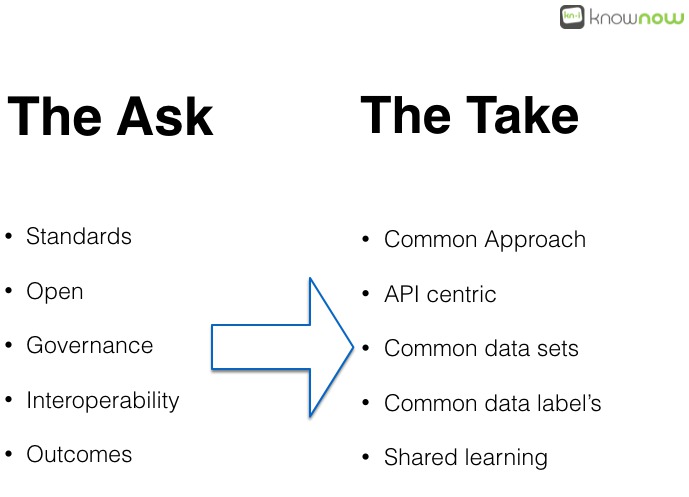CRUNCH – Climate Resilient Urban Nexus CHoices – tackles the urban challenges and inefficiencies of the food, water, and energy sectors. It involves 19 partners from 6 countries and has received €1.6m of funding from the European Horizon2020 programme.
Increasing demands for food, water, and energy often exceed the capabilities of any one region. Combined with population growth and the expansion of cities, an interconnected world makes such collaboration necessary.
What will CRUNCH deliver?
CRUNCH will see the development of a new Integrated Decision Support System (IDSS). It will be used by city leaders to manage the critical resources of Food, Water and Energy
KnowNow and CRUNCH
KnowNow is responsible for technical quality assurance and is acting as the technical conscience. Key to that role is ensuring that smart city standards are applied to the IDSS
CRUNCH will be following the new ISO 37106 standard. This has been resolved from prototype standards called PAS 181- Interoperability Framework for Smart Cities.
At the start of any smart cities project the defining of principles is the foundation for the subsequent technical, informational and organisation outputs the project generates.
What are the principles for Crunch?
The five principles for the CRUNCH IDSS are as follows:
- Open Data
- Standards-Based
- Interoperable
- Outcomes Centric
- Collaborative (Governance)
What is the end result?
Any principle defined has to have a purpose and a chance of being used to influence or benchmark the technical outputs of the project.
To that end, each principle has a design realisation component. This is explained via the following diagram:
From now on, as design decisions are made and code elements released to create the new IDSS, the principles will be used as a back stop. If a piece of code does not meet these principles it is sent back to the drawing board.
What does The Ask -> The Take mean?
Taking principles and turning them into sensible and practical design points is the task of the IT architect. KnowNow’s role on the project is to make sure that these design elements are consistent and are delivered to the standard.
We have therefore taken each principle (The Ask) and applied what that might really mean from an IDSS perspective (The Take).
Standards –> Common Approach
Being standards-centric means adopting a common approach. This can be from a data labelling perspective and making sure each of the silos (Food, Water and Energy) has a common data dictionary and common data ontology.
Open –> API Centric
Being open means having easy access to the data. The best way of delivering this is to place the data behind an API. Make the API the gatekeeper to the data, and use the API to define what can happen to that data.
Governance –> Common Data Sets
What will make a successfully deployed and working IDSS is smart decisions being made that have an impact on the ground. This can be made easier by lots of talking, agreement tracking, and enforcement. The starting conversation is making sure all parties are working off common datasets. When the IDSS outputs a new GIS layer, this can be consumed and understood by all actors. Otherwise, why bother?
Interoperability –> Common Data Labels
The interoperability of the IDSS, working across silos of information, will mandate the use of common data labels. If the data is trusted and commonly understood then the decision will be easier to make, understand and process.
Not having common data labels will require a translation step prior to input into the IDSS. Or what is more likely to happen is a misinterpretation of the answer as the inputted data was misconstrued. This will lead to poor quality decisions being made.
Outcomes –> Shared Learning
The critical success factor of the IDSS will be the new decision opportunities the IDSS will provide. This is measured by outcome, which is defined at the local level, but the measure is common across any IDSS that is in operation. All the IDSS will need to share their evolution of decisions made and whether the outcome predicted actually occurred.
This shared learning will ensure continuous service improvement. This is necessary as the world of food-water-energy is constantly changing and evolving.
What will the IDSS look like?
The IDSS will be used by city leaders to help them make the best possible decisions in the management of their local food-water-energy resources. With a clear indication as to which of these inputs and outputs has the most beneficial circular economy impact.
The city leader will be able to dynamically change these inputs too, as well as obtain automated real-time data from sensors and trusted open data sources. The IDSS will present the city leader with a number of visual answers based on changing the inputs and expected outputs of food-water-energy resources in their city.
The IDSS is expected to be designed once, but have multiple deployments. This will ensure that the IDSS is a repeatable exercise. KnowNow and CRUNCH will also publish the findings of the development at the end of the project.
So to summarise the role of KnowNow and CRUNCH – Ensuring open standards, acting as the technical conscience, and ensuring operability.
If your smart city project would like to have principles applied then do get in touch. Or if your city would like its own IDSS then KnowNow would love to talk to you.
Get in touch at contact@kn-i.com


Trackbacks/Pingbacks